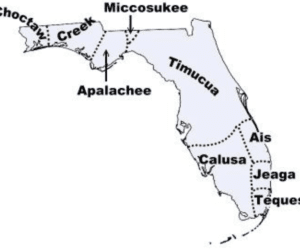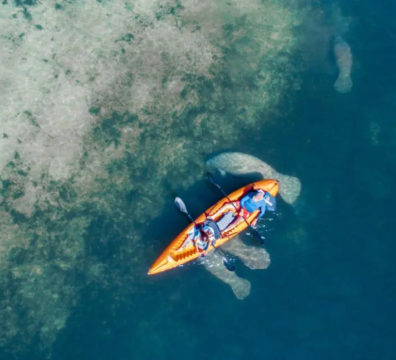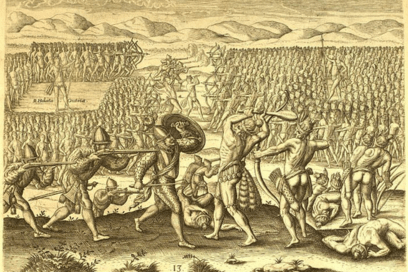- By Admin
- 1 August, 2023
Introduction to the Colonization of Florida
Florida, known for its sunshine and vibrant culture, holds a captivating history of colonial expansion that has left a profound impact on the region. The colonization of Florida is a tale of exploration, conquest, and cultural assimilation that shaped the state’s identity. From the early European expeditions to the establishment of permanent settlements, this article delves into the fascinating history of Florida’s colonial past.
Early European Explorations
Florida’s history of colonization began with the arrival of European explorers in the early 16th century. The Spanish were the first to set foot on Florida’s soil when Juan Ponce de León, searching for the legendary Fountain of Youth, landed in 1513. Although Ponce de León claimed the territory for Spain, it wasn’t until 1565 that the Spanish established the first permanent European settlement in the United States – St. Augustine.
Spanish Colonial Rule
St. Augustine, founded by Admiral Pedro Menéndez de Avilés, became the capital of Spanish Florida and a strategic stronghold for the Spanish Empire. As Spain sought to protect its newly acquired territory, they built a chain of forts along the coast, such as Fort Matanzas and Castillo de San Marcos. These fortifications were instrumental in fending off potential threats from rival European powers and Native American tribes.
Throughout the 16th and 17th centuries, Spanish influence spread throughout Florida, with missionaries attempting to convert Native American tribes to Christianity. This era saw a blend of cultures and traditions as European customs intermingled with those of the indigenous people.
English and French Interference
Despite Spanish dominance, other European powers were not deterred from seeking their share of the Floridian territory. The English and French, in particular, sought to challenge Spain’s supremacy. The first English attempt to establish a settlement in Florida was in 1559 when Sir John Hawkins founded Fort Caroline near present-day Jacksonville. However, the Spanish responded swiftly and drove out the English, leading to the establishment of St. Augustine as a Spanish stronghold.
In the 17th century, the English made additional efforts to gain control of Florida. In 1668, they established Charles Town (now Charleston) in Carolina, sparking territorial disputes with Spain over the borders of Florida.
The First Seminole War
The early 19th century saw increased tensions between the United States and Spain over Florida’s future. With Spanish rule weakening, many Native American tribes, including the Creek and Seminole, found refuge in the territory. As a result, armed conflicts emerged between the settlers and these Indigenous groups, culminating in the First Seminole War (1817-1818). The United States eventually acquired Florida from Spain in the Adams-Onís Treaty of 1819.
Territorial Growth and Statehood
With the acquisition of Florida, the United States began a process of expansion, encouraging settlers to move southward. The Second Seminole War (1835-1842) followed, as the U.S. sought to remove the Seminole tribes from the territory. The war was brutal and costly, but the U.S. eventually achieved its goal.
On March 3, 1845, Florida became the 27th state of the United States. With statehood, Florida experienced a population boom, further accelerating its economic and infrastructural growth. The discovery of phosphate and the expansion of railroads played significant roles in Florida’s development.
Conclusion
The history of colonial expansion in Florida is a multifaceted journey encompassing various European powers and indigenous peoples. From the early Spanish explorations to the eventual acquisition by the United States, Florida’s history is a tapestry of cultural exchange, conflicts, and territorial expansion. The legacy of colonization remains visible today, as Florida’s diverse heritage and rich history continue to shape the state’s identity and allure visitors from around the world.
Hobie Pedal Drive Passport 12 Single
- These come with pedals drives!! Hands free propulsion
- 2,000$ Kayak for 75$
- 2 1/2- 3 hours of Water Time
- No ages younger than 8 (Tandems accept younger ages)
- Discount for groups larger than 3 (Per age group)
- Beginner Friendly
- Mangrove Tunnels
- Secluded Beaches
- Shelling
- Complementary Photos
- Equipment and Gear provided
Hobie Pedal Drive Tandem Compass Duo
- Comes with two pedals
- 4,000$ Kayak for 75$
- 2 1/2 to 3 hours of Water Time
- Under 8 years old must be accompanied by and Adult
- Discount for groups larger than 3 (Per age group)
- Beginner Friendly
- Mangrove Tunnels
- Secluded Beaches
- Shelling
- Complementary Photos
- Equipment and Gear provided


Similar Posts
- SEO Admin
- 01 March 2024
Unlocking History: Exploring Mound Key
Home / Our Adventures Unlocking History: Exploring Mound Key Archaeological State Park with Coastal Expeditions Admin 29 February 2024 Nestled
- SEO Admin
- 28 February 2024
The Joys of Kayaking: Exploring
Home / Our Adventures The Joys of Kayaking: Exploring the Serene Waters of Naples and Bonita Springs Admin 28 February
- SEO Admin
- 22 February 2024
5 Best Places to Kayak
Home / Our Adventures 5 Best Places to Kayak in Naples and Bonita Springs, Florida Admin 24 February 2024 Naples
- SEO Admin
- 20 February 2024
Navigating Stress – The Therapeutic
Home / Our Adventures Navigating Stress - The Therapeutic Benefits of Kayaking in Naples, Florida Admin 20 February 2024 In
- admin
- 01 August 2023
History of Florida Colonization
Home / Our Adventures History of Florida Colonization By Admin 1 August, 2023 Introduction to the Colonization of Florida Florida,





